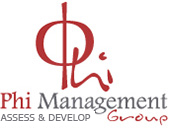Today's employees expect change; for them change should be intuitive, flexible, relevant and current.
When it comes to the 'current' component, all consider technology as being a must nowadays. The modern workforce not only expects to work with up-to-date technologies; it expects immediate feedback about its performance; Regular performance feedback isn’t a millennial thing. Every employee wants to know where they stand.
Agile performance management takes the best of traditional performance management process and combines it with the needs of today. It provides a structure that managers and employees want so the process remains fair. It also includes the documentation aspect necessary to support job changes and promotions.
It takes traditional performance management one step further by making the process technology driven, which allows for the real-time feedback conversations that employees want to move to the forefront.
There are four key elements to bringing agile in line with current performance management processes:
1. Regular performance conversations. Most organizations have some mechanism in place requiring managers and employees to meet once or twice a year. With agile performance management, employees and managers meet more often. The timeliness of performance feedback helps the employee perform at a higher level.
2. Peer-based feedback. In addition to increased manager feedback, employees learn how to provide each other with performance feedback. This can be just as valuable – if not more so – than manager feedback. Employees collaborate with colleagues every day and need positive working relationships with their peers.
3. Focus on current and future projects. More frequent performance conversations mean less time is spent rehashing old behavior. Employees and managers already know what happened in the past. The conversations are spent on future performance, talking about how to accomplish goals.
4. Training at every level. Every employee becomes skilled in delivering performance-related feedback. This helps employees take ownership of their career development.
The positive part about implementing agile performance management into the organization is the ability to phase-in these key elements. Phased implementations can be very successful and Agile Performance Management allows the flexibility to introduce the entire process or each piece separately.

